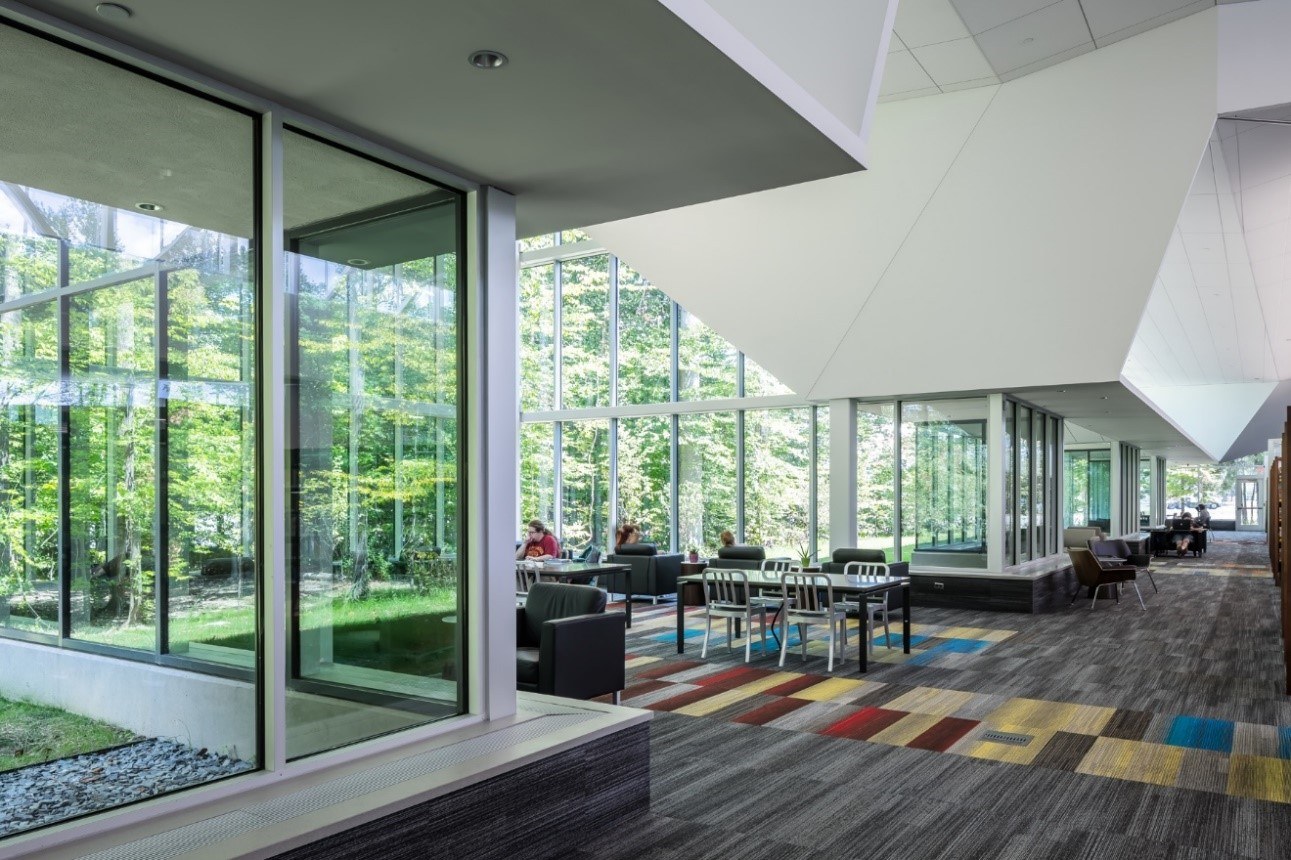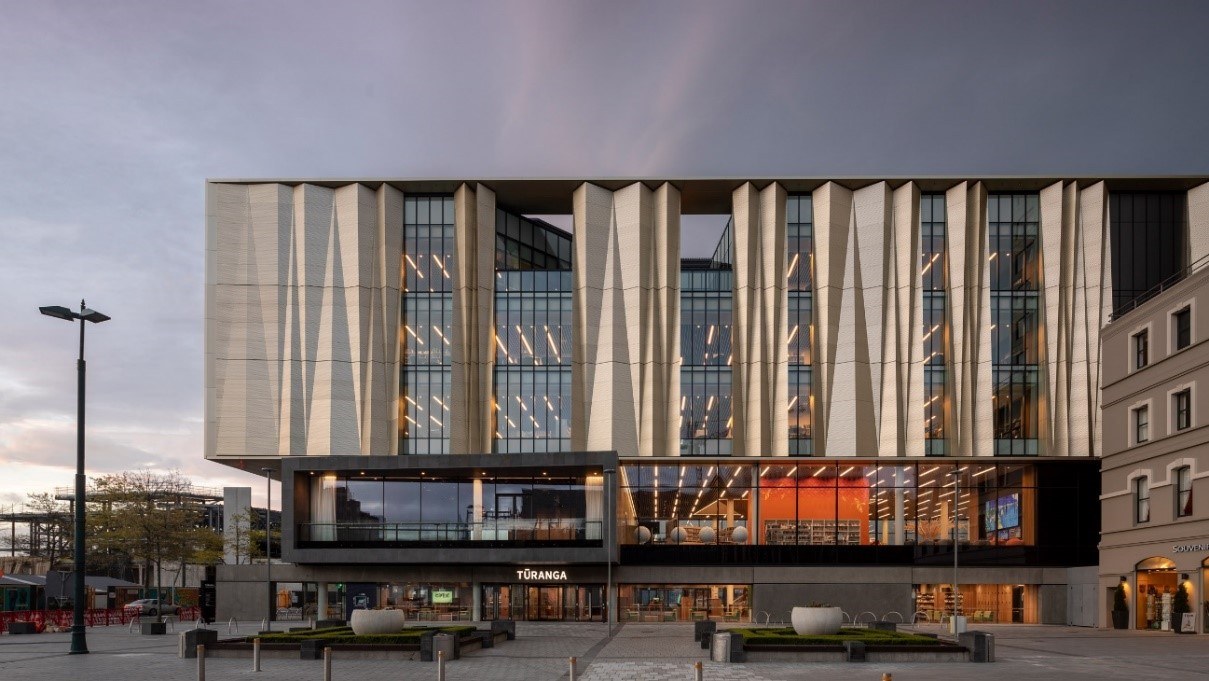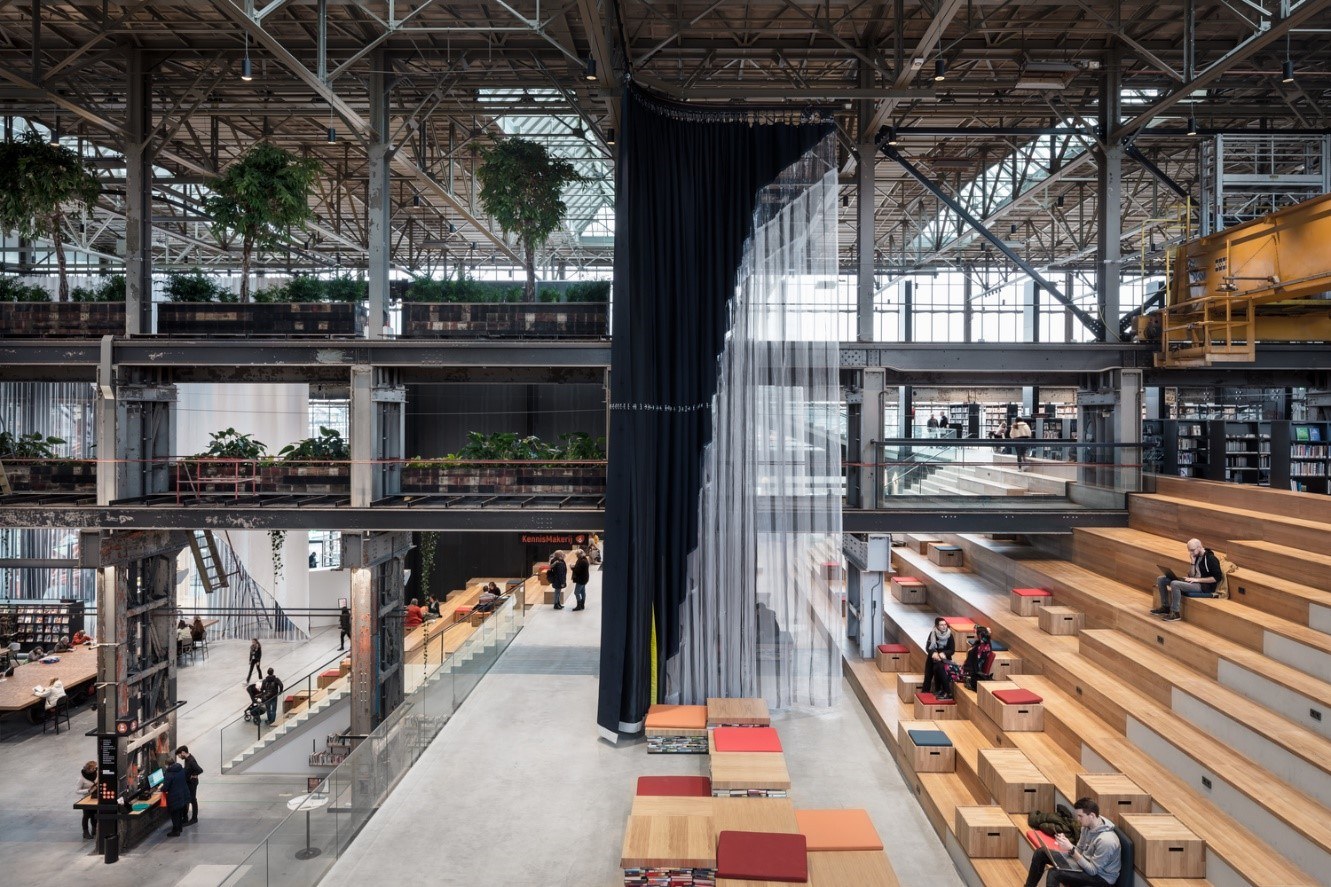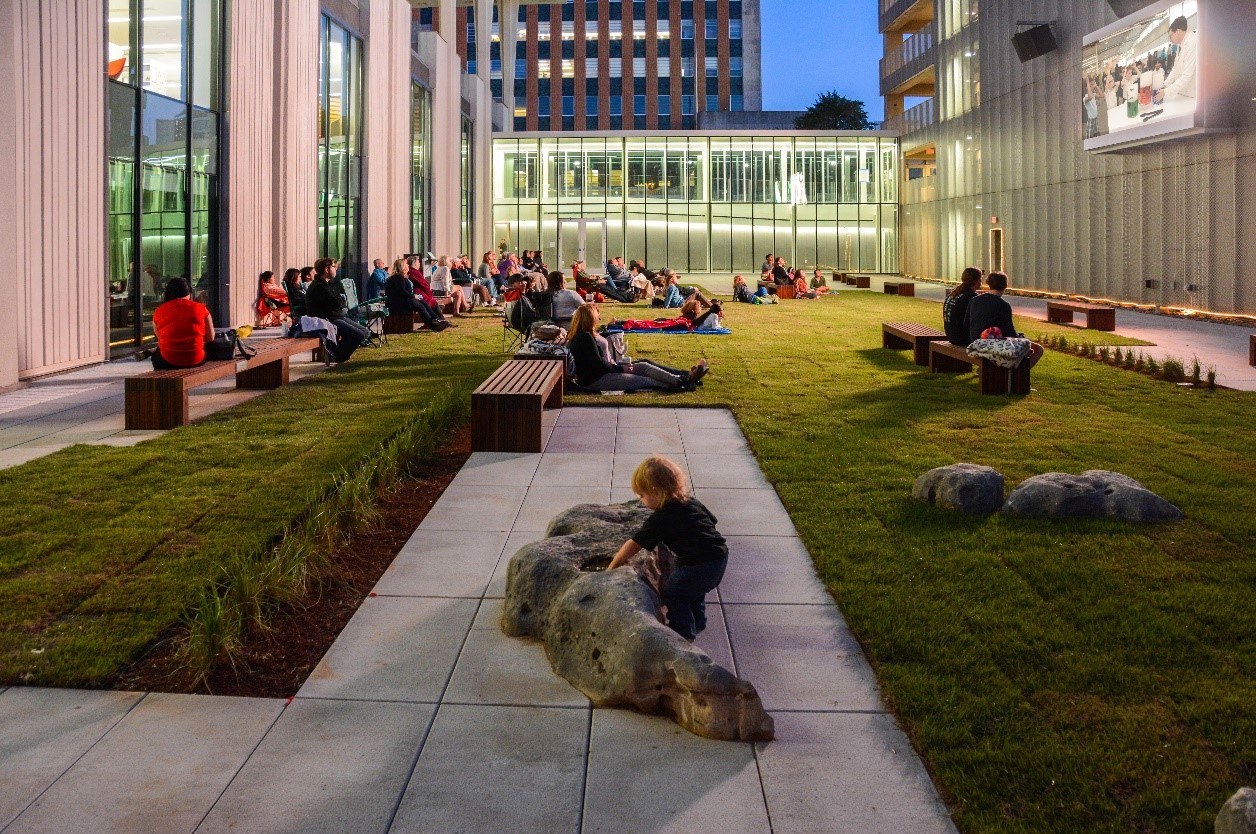Generative and Resilient: Sustainability Beyond the Walls of the Library
by Dagmara Larsen, AIA, LEED AP, Principal, MSR Design
Nearly 10 years ago, the Urban Libraries Council published the sustainability report, Partners for the Future: Public Libraries and Local Governments Creating Sustainable Communities, which outlines the “triple bottom line” approach to sustainable development, based on environmentally sound, economically feasible and socially equitable practices. The ALA Council adopted the same approach to sustainability as a core value of librarianship during the organization’s 2019 Midwinter Meeting in Seattle. The next challenge is to implement these practices and push the boundaries further.
In the past decade, we have observed the effects of continued climate change. In the most recent report, assessing the global climate in June 2019, the National Oceanic and Atmospheric Administration’s National Center for Environmental Information stated that last June was the warmest on record for the planet with record-low Antarctic sea ice levels. Human health is intimately linked to the condition of our immediate environment and the Earth. We therefore need to take a holistic approach to design, focused on the well-being of individuals, community and the planet, for every project. Sustaining the current state is not enough. Given present conditions, regenerative design is necessary to restore ecological balance.
As leading institutions in communities across the United States, libraries are recognized as positive change agents that shape society’s future leaders. Recognizing that trusted position, libraries have the opportunity to positively impact their communities and the environment across the board through the design of their buildings and operations.

Louisville Free Public Library South Central Regional Library. Architects: MSR Design, JRA Architects. Photo by: Brandon Stengel.
A Holistic Approach Begins with Human Well-Being
All well designed public spaces are dedicated, at their core, to human experience and are shaped to support the well-being of individuals. The first step in a human-centric design is the selection of healthy materials that are Red List free, defined by the International Living Future Institute’s Living Building Challenge as having no carcinogenic toxins. Architectural firms that are leading the future of sustainable design, conduct research to understand which products truly qualify to be included in this still limited group.
Welcoming customers from all walks of life, libraries need to provide an efficient, comfortable environment for everyone through a mix of spaces. When the Louisville Free Public Library started work on their new South Central Regional Library, creating an exceptional user experience came to the forefront of the design. Nestled into the last remaining section of woods that had been cut for a surrounding development, the new building resulted from a rigorous application of biophilic design principles. The interior space offers ample daylight, views and a sense of shelter for people. By locating study spaces along the edge of the public floor, customers can experience the activity within the library and the calming backdrop of nature.

Tūranga (Christchurch, New Zealand). Architects: Schmidt Hammer Lassen Architects, Architectus. Photo by: Adam Mork.
Creating Resilience and Community Well-Being
In times of distress, we look to our community for support. As in the case of Christchurch, New Zealand, when the entire community was suffering, responsibility shifted to civic and governmental organizations to come to the rescue and help restore not only the physical environment, but also the spirit of the place. The city’s new library Tūranga was designed as part of a concentrated effort to restore the heart of the city, devastated by earthquakes in 2010 and 2011.
The building was engineered to withstand any potential earthquake disaster, protecting the financial and emotional investment for future generations. Its design incorporates a range of sustainable strategies to provide an efficient and well-functioning environment for the community. The key design elements helped restore a sense of identity for a community devastated by natural disaster. Integrated indigenous art, choice of building materials and an entry sequence and building orientation originated from a thoughtful design process all come together to celebrate the culture of the Ngāi Tūāhuriri, the local Māori people of New Zealand’s South Island.

LocHal Library (Tilburg, Holland). Architects: CIVIC architects, Braaksma & Roos Architectenbureau, Inside Outside, Mecanoo. Photo by: Stijn Bollaert.
Conserving and Renewing the Urban Fabric
In a postindustrial district of Tilburg, Holland, a vacant warehouse that housed locomotive production and repair lines at the beginning of the 20th century, has been given a second life as the LocHal. Containing the library and other cultural organizations, the new community space benefits from the grandeur of the existing volume, while offering an intimate experience for visitors within smaller nested quarters. Reuse of the historic structure has not only conserved natural resources and preserved a significant building for the community, but it has also stimulated activity and the economy in this part of Tilburg.
Similar results were achieved in Tulsa, Okla., when Tulsa City-County Library renovated and built an addition onto its dated central library. The original building from the early 1960s provided a perfect opportunity to conserve resources by reusing an ample concrete structure and therefore keeping all of the embedded carbon in place. The expansive roof over the six-story building now supports rainwater collection used for landscape irrigation and new PV panels that harvest solar energy for the library. In addition to these building improvements, the rejuvenated library has reenergized the underutilized downtown by requiring library activities to be visible outside the building to engage the community. A family garden replaces a dilapidated parking lot. Low velocity air leaves the building at the ground level to passively cool this green oasis, creating a pleasant microclimate for all users.

Tulsa City-County Library Central Library (Okla.). Architect: MSR Design. Photo by: John Fancher.
Reaching Beyond the Building: Net Positive Design
Just as in the Tulsa project, when designing a new library, it is critical to champion opportunities that enrich the environment and create outdoor spaces for individuals, the community and library programs. An example of net positive design, the Green Square library in Sydney, Australia, revitalizes one of the city’s oldest industrial areas. A sophisticated air-delivery system, integrated into perimeter shelving to optimize energy, serves beautifully daylit spaces. The library is located almost entirely under a public plaza, with the exception of the entry and a tower that contains specialty programs. This bold move creates a generous and flexible space in the urban area designed to collect stormwater runoff for use in the library. The Green Square project sets a new standard for library buildings, showcasing the net positive gain that design can achieve.

Green Square (Sydney, Australia). Architects: Stewart Hollenstein, Stewart Architecture. Photo by: Tom Roe.
Every library has the potential to become the most inspiring place for its community and citizens. Design excellence and conserving resources (both natural and financial) are essential when planning and operating a facility designed to educate its users by example.
Incorporating sustainable initiatives such as minimizing waste and limiting use of plastics into the daily operations is a necessary part of plotting a strategic path forward for every library. As places founded on the idea that anything is possible, libraries should strive to achieve measurable positive impacts on communities and the planet to give us hope.
Dagmara Larsen, AIA, LEED AP, offers an international perspective to the design of libraries as a native of Poland who has worked in Europe, South America and the United States. Principal with MSR Design, she has participated in Library Journal Design Institute programs across the country and as a panelist for last year’s event in Minneapolis. Dagmara also presented a talk at the Polish Librarians Association Forum in Lublin, Poland, and her design work has received numerous honors and awards, including an AIA/ALA Library Building Award.

ULC Thanks MSR Design for Sponsoring
the 2019 ULC Forum
This October 16-18, the 2019 ULC Forum: Preparing to Lead on AI + Digital Citizenship will convene our member community in Salt Lake City to engage in expert-led discussions and activities to elevate our shared understanding of the economic and social implications of emerging technologies.
Hosted by Salt Lake City Library and Salt Lake County Library, this important event will bring together leaders from major urban library systems across the U.S. and Canada. Together, we will map out how libraries can take ownership of their role at the forefront of the AI revolution, fostering and empowering digital-savvy citizens with services and tools that will strengthen democracy.
ULC is grateful to MSR Design for its support as a sponsor for the 2019 ULC Forum. Click here to learn more about this can't-miss event.
Related Articles

Reclamation/Reclamación — Stories of Climate Change Refugees
Brooklyn Public Library
Learn how Brooklyn Public Library's Our Streets, Our Stories oral history project explores environmental and social justice issues.
Learn More

Building Buzz About Pollinators at the Oak Park Public Library
Oak Park Public Library
Learn how Oak Park Public Library sustains a natural environment and offers learning opportunities on the Main Library’s Green Roof.
